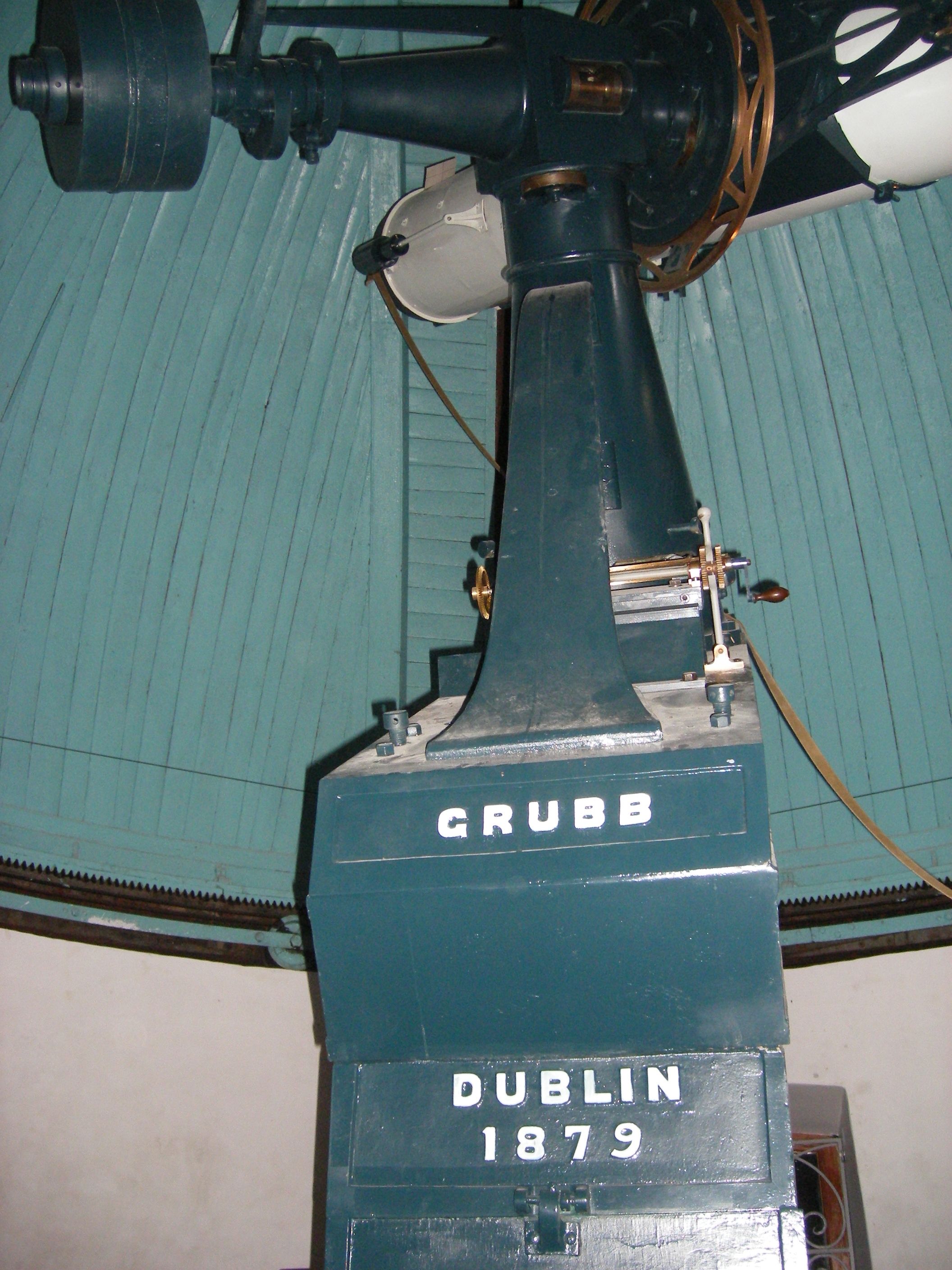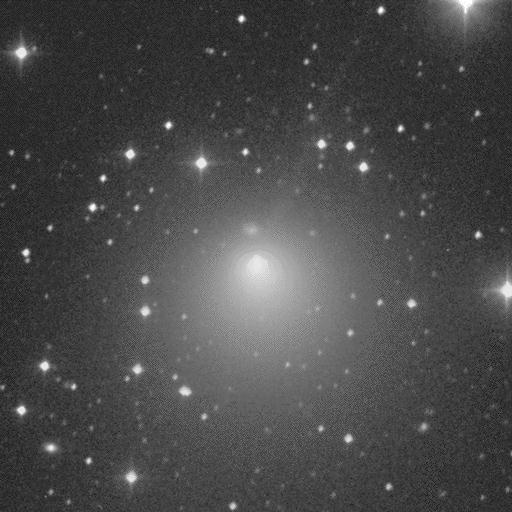|
Sheepshanks Equatorial
Sheepshanks equatorial was a 6.7 inch (170 mm) aperture refracting telescope installed in 1838 at the Royal Observatory, Greenwich, Royal Observatory in Greenwich. The telescope was donated to the observatory by the astronomer Richard Sheepshanks. The telescope had a doublet objective lens made by Robert-Aglaé Cauchoix, Cauchoix of Paris. Originally it was mounted on a clockwork driven equatorial mounting by Grubb Parsons on a stone pillar. From 1835 to 1963 it was in the Sheepshanks dome at the Greenwich observatory, and from 1963-1982 in the Altazimuth Pavilion. In the early 1980s it was placed in storage. The telescope's Sheepshanks dome was in between the later Great Equatorial Building and the prime Meridian. The focal length of the telescope has been quoted as 6 feet 2½ inches (1.9 meters) in one source, but according to another it is 8 feet 2 inches (2.5 meters). The telescope tube was made of wood. An 1840 report from the Observatory noted of the new Sheepshanks ... [...More Info...] [...Related Items...] OR: [Wikipedia] [Google] [Baidu] |
Altazimuth Pavilion , a two-axis telescope mount
{{Disambig ...
Altitude-azimuth, alt-azimuth, or alt-az may refer to: * Horizontal coordinate system, or altitude-azimuth coordinates * Altazimuth mount An altazimuth mount or alt-azimuth mount is a simple two-axis mount for supporting and rotating an instrument about two perpendicular axes – one vertical and the other horizontal. Rotation about the vertical axis varies the azimuth (compass bea ... [...More Info...] [...Related Items...] OR: [Wikipedia] [Google] [Baidu] |
Refracting Telescope
A refracting telescope (also called a refractor) is a type of optical telescope that uses a lens (optics), lens as its objective (optics), objective to form an image (also referred to a dioptrics, dioptric telescope). The refracting telescope design was originally used in spyglasses and astronomy, astronomical telescopes but is also used for long-focus lens, long-focus camera lenses. Although large refracting telescopes were very popular in the second half of the 19th century, for most research purposes, the refracting telescope has been superseded by the reflecting telescope, which allows larger apertures. A refractor's magnification is calculated by dividing the focal length of the objective lens by that of the eyepiece. Refracting telescopes typically have a lens at the front, then a optical train, long tube, then an eyepiece or instrumentation at the rear, where the telescope view comes to focus. Originally, telescopes had an objective of one element, but a century later, tw ... [...More Info...] [...Related Items...] OR: [Wikipedia] [Google] [Baidu] |
Royal Observatory, Greenwich
The Royal Observatory, Greenwich (ROG; known as the Old Royal Observatory from 1957 to 1998, when the working Royal Greenwich Observatory, RGO, temporarily moved south from Greenwich to Herstmonceux) is an observatory situated on a hill in Greenwich Park in south east London, overlooking the River Thames to the north. It played a major role in the history of astronomy and navigation, and because the Prime Meridian passes through it, it gave its name to Greenwich Mean Time, the precursor to today's Coordinated Universal Time (UTC). The ROG has the IAU observatory code of 000, the first in the list. ROG, the National Maritime Museum, the Queen's House and the clipper ship ''Cutty Sark'' are collectively designated Royal Museums Greenwich. The observatory was commissioned in 1675 by King Charles II, with the foundation stone being laid on 10 August. The old hilltop site of Greenwich Castle was chosen by Sir Christopher Wren, a former Savilian Professor of Astronomy; as Greenw ... [...More Info...] [...Related Items...] OR: [Wikipedia] [Google] [Baidu] |
Richard Sheepshanks
Richard Sheepshanks (30 July 1794, in Leeds – 4 August 1855, in Reading) was a British astronomer. Personal life He was born the son of Joseph Sheepshanks, a Leeds textile manufacturer of the well-to-do Sheepshank family of Bilton, Harrogate. His brother was John Sheepshanks (clothing manufacturer and art collector), and his sister was Anne Sheepshanks (astronomical benefactor). He received his education at Trinity College, Cambridge, graduating in 1816. He was called to the bar in 1824 and took orders in Church of England in 1825, but did not practise either profession as the death of his father left him with sufficient wealth to pursue his scientific interests. He had six children from a relationship with an Irish dancer, one of whom was Eleanor Louisa Moravia Henry, also known as Nelly, mother of the painter Walter Sickert and the feminist Helena Swanwick. Sheepshanks gave financial support to the dancer and her husband, who in turn claimed paternity. Professional life From ... [...More Info...] [...Related Items...] OR: [Wikipedia] [Google] [Baidu] |
Robert-Aglaé Cauchoix
Robert-Aglaé Cauchoix (24 April 1776 – 5 February 1845) was a French optician and instrument maker, whose lenses played a part in the race of the great refractor telescopes in the first half of the 19th century. Instruments At first Cauchoix produced a wide range of scientific instruments including barometers and micrometers, but he soon specialized in optics, making spherometers and objectives. He made a telescope for the Paris Observatory in 1820 and in 1825 he made a 6.5 inch (16.5 cm) refractor for the observatory of the Collegio Romano, a Jesuit academy in Rome. In the Royal Observatory, Greenwich an 1838 instrument named the Sheepshanks telescope includes an objective by Cauchoix. The Sheepshanks had a 6.7 inch (17 cm) wide lens, and was the biggest telescope at Greenwich for about twenty years. An 1840 report from the Observatory noted of the then-new Sheepshanks telescope with the Cauchoix doublet: Great refractors Although the reflector telescope was inve ... [...More Info...] [...Related Items...] OR: [Wikipedia] [Google] [Baidu] |
Grubb Parsons
Sir Howard Grubb, Parsons and Co. Ltd. was a telescope manufacturer, more commonly known as Grubb Parsons. It was based in Newcastle upon Tyne, in England. They were a noted telescope maker throughout the 19th and 20th century, making telescope throughout the World and some of the largest British telescopes, including one of their final projects, the William Herschel Telescope in the 1980s. In the late 1800s they were one of the few companies that could make large doublet objective lenses. History The company was founded in Dublin by Thomas Grubb as the Grubb Telescope Company in 1833.Backyard Voyager Page 1 Thomas Grubb was joined in 1864 by his son who built on the company's reputation for quality |
William Christie (astronomer)
Sir William Henry Mahoney Christie (1 October 1845 – 22 January 1922) was a British astronomer. He was born in Woolwich, London, the son of Samuel Hunter Christie and educated at King's College School and Trinity College, Cambridge. He was fourth wrangler in 1868 and was elected a fellow of Trinity in 1869. Having been Chief Assistant at the Royal Observatory at Greenwich from 1870 to 1881, he was appointed to replace George Airy as the eighth Astronomer Royal in 1881 and remained in office until 1910. He received the degree D.Sc. ''( honoris causa)'' from the University of Oxford in June 1902, and was created a Knight Commander of the Order of the Bath (KCB) in 1904. He was elected a Fellow of the Royal Society in June, 1881. He was president of the Royal Astronomical Society from 1888 to 1890. The first Astronomer Royal to retire at 65 (all previous incumbents bar Airy and John Pond had died in office; John Pond had been forced by poor health to resign in 1835, while ... [...More Info...] [...Related Items...] OR: [Wikipedia] [Google] [Baidu] |
Comet Encke
Comet Encke , or Encke's Comet (official designation: 2P/Encke), is a periodic comet that completes an orbit of the Sun once every 3.3 years. (This is the shortest period of a reasonably bright comet; the faint main-belt comet 311P/PanSTARRS has a period of 3.2 years.) Encke was first recorded by Pierre Méchain on 17 January 1786, but it was not recognized as a periodic comet until 1819 when its orbit was computed by Johann Franz Encke. Like Halley's Comet, it is unusual in its being named after the calculator of its orbit rather than its discoverer. Like most comets, it has a very low albedo, reflecting only 4.6% of the light its comet nucleus, nucleus receives, although comets generate a large coma (cometary), coma and tail that can make them much more visible during their perihelion (closest approach to the Sun). The diameter of the nucleus of Encke's Comet is 4.8 km. Discovery As its official designation implies, Encke's Comet was the first periodic comet discovered af ... [...More Info...] [...Related Items...] OR: [Wikipedia] [Google] [Baidu] |
Occultation
An occultation is an event that occurs when one object is hidden from the observer by another object that passes between them. The term is often used in astronomy, but can also refer to any situation in which an object in the foreground blocks from view (occults) an object in the background. In this general sense, occultation applies to the visual scene observed from low-flying aircraft (or computer-generated imagery) when foreground objects obscure distant objects dynamically, as the scene changes over time. If the closer body does not entirely conceal the farther one, the event is called a ''transit''. Both transit and occultation may be referred to generally as ''occlusion''; and if a shadow is cast onto the observer, it is called an eclipse. The symbol for an occultation, and especially a solar eclipse, is file:Occultation symbol.svg (U+1F775 🝵). Occultations by the Moon The term occultation is most frequently used to describe lunar occultations, those relativ ... [...More Info...] [...Related Items...] OR: [Wikipedia] [Google] [Baidu] |
Moons Of Jupiter
There are 82 known moons of Jupiter, not counting a number of moonlets likely shed from the inner moons. All together, they form a satellite system which is called the Jovian system. The most massive of the moons are the four Galilean moons: Io, Europa, Ganymede, and Callisto, which were independently discovered in 1610 by Galileo Galilei and Simon Marius and were the first objects found to orbit a body that was neither Earth nor the Sun. Much more recently, beginning in 1892, dozens of far smaller Jovian moons have been detected and have received the names of lovers (or other sexual partners) or daughters of the Roman god Jupiter or his Greek equivalent Zeus. The Galilean moons are by far the largest and most massive objects to orbit Jupiter, with the remaining 78 known moons and the rings together composing just 0.003% of the total orbiting mass. Of Jupiter's moons, eight are regular satellites with prograde and nearly circular orbits that are not greatly inclined wit ... [...More Info...] [...Related Items...] OR: [Wikipedia] [Google] [Baidu] |
Shuckburgh Telescope
The Shuckburgh telescope or Shuckburgh equatorial refracting telescope was a diameter aperture telescope on an equatorial mount completed in 1791 for Sir George Shuckburgh (1751–1804) in Warwickshire, England, and built by British instrument maker Jesse Ramsden (1735–1800)... The Shuckburgh telescope is described op. 99 It was transferred to the Royal Observatory, Greenwich in 1811 and the London Science Museum in 1929. Even though it has sometimes not been regarded as particularly successful, its design was influential. It was one of the larger achromatic doublet telescopes at the time, and one of the largest to have an equatorial mount. It was also known as the eastern equatorial for its location. It was pictured in the Rees Cyclopedia of the early 1800s. It was early pictured in ''Philosophical Transactions'', published in 1793. At the Royal Observatory in Greenwich, it was for a time installed in the North Dome, although this had a Sky view partially obscured by ... [...More Info...] [...Related Items...] OR: [Wikipedia] [Google] [Baidu] |







